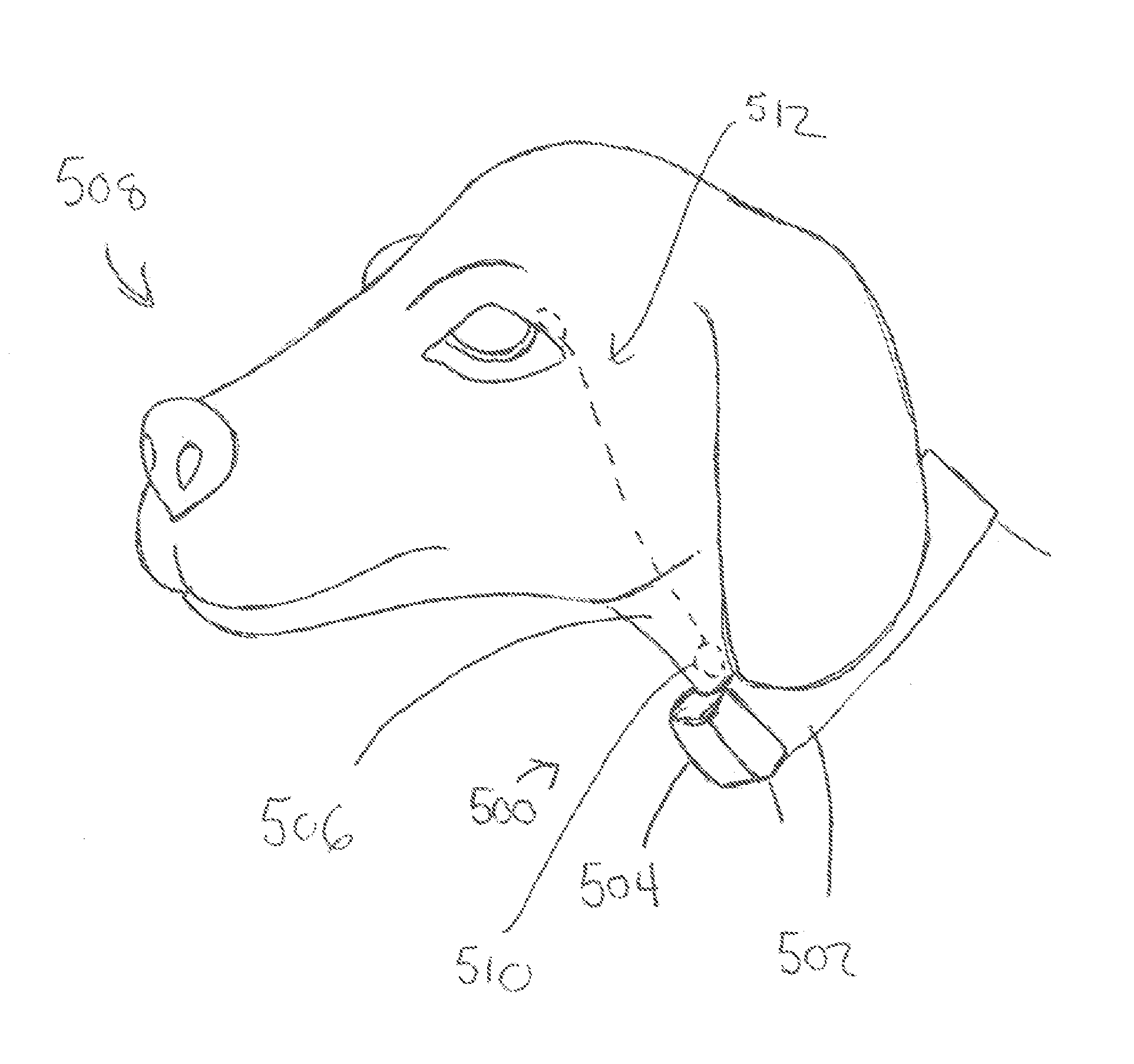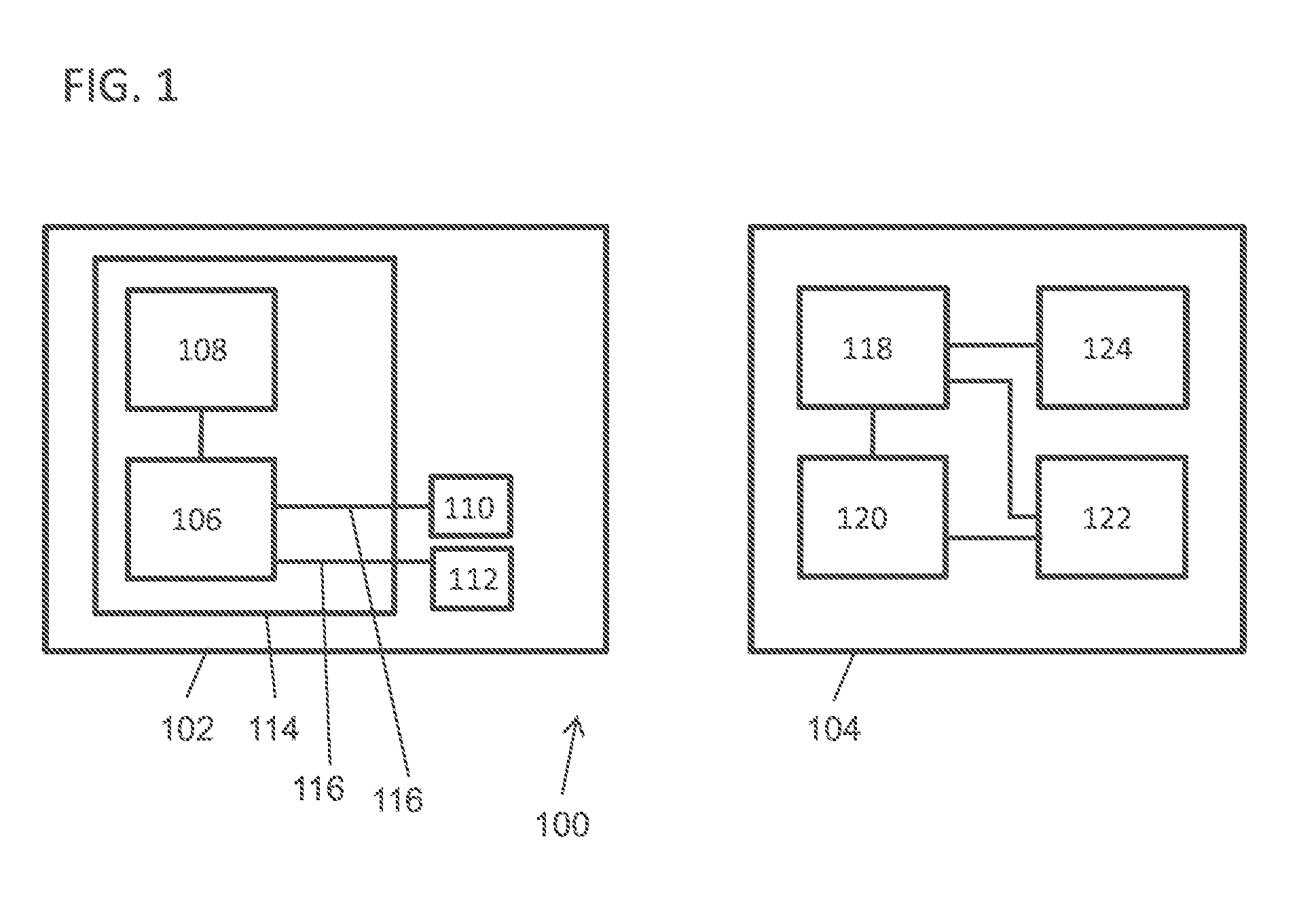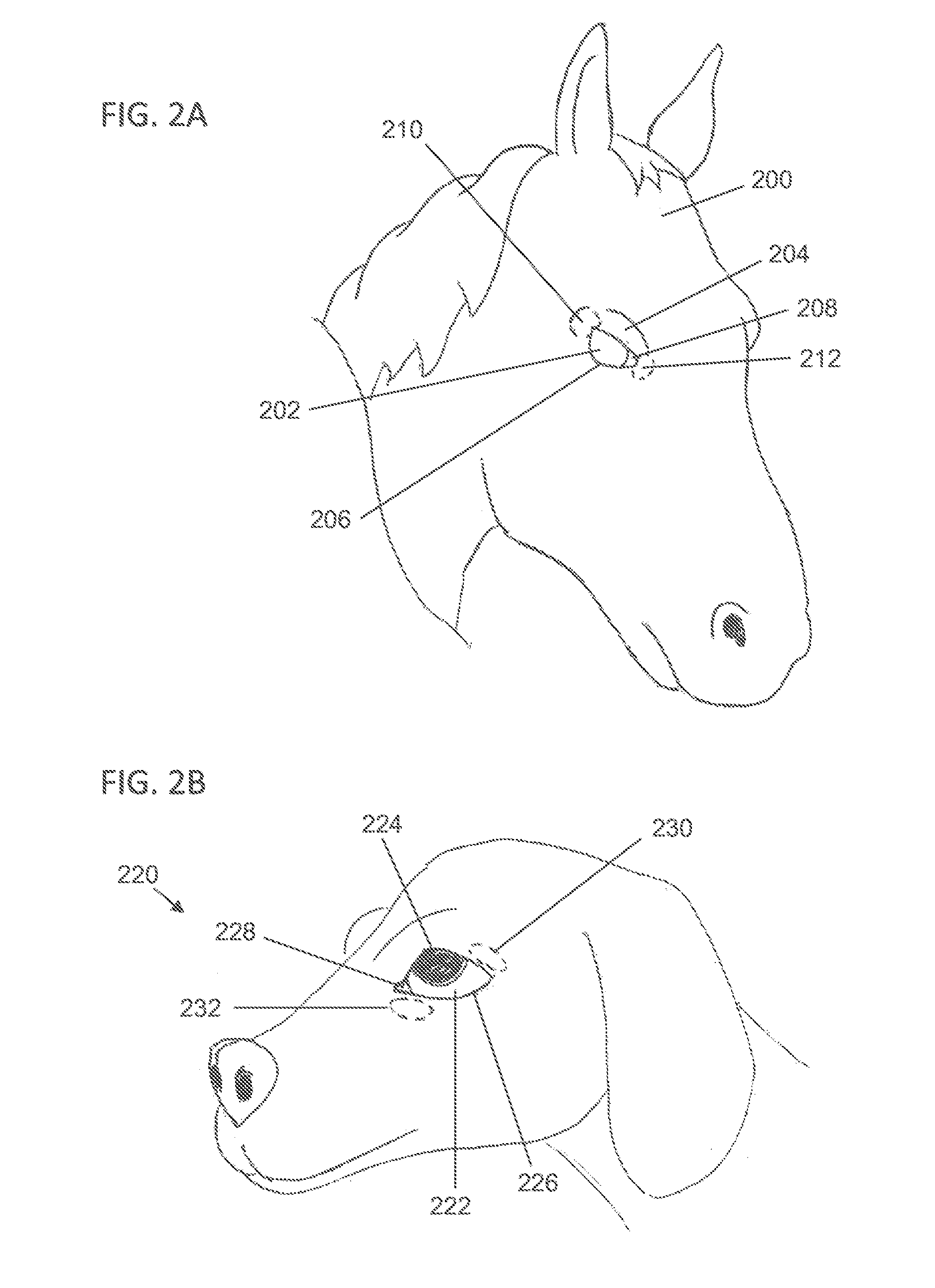Devices and methods for treating dry eye in animals
a technology for dry eye and treatment methods, applied in the field of stimulation systems and methods for treating nonhuman animals, can solve problems such as yellow discharge, pigmentation, scarring of the cornea, irritation,
- Summary
- Abstract
- Description
- Claims
- Application Information
AI Technical Summary
Benefits of technology
Problems solved by technology
Method used
Image
Examples
Embodiment Construction
[0016]Described here are stimulation systems for delivering stimulation to an animal (i.e., non-human) patient. Also described here are methods for treating one or more conditions in an animal (i.e., non-human) patient. In some variations, the stimulation systems described here may be configured to treat dry eye in an animal patient, and the methods may comprise delivering stimulation to the animal patient to treat dry eye. The systems and methods described may be used to treat any suitable non-human animal, which in some instances may be a mammal. In some variations, the systems and methods may be used to treat a horse, a cat, or a dog. Additionally, while the systems and methods described here focus on the treatment of dry eye, the stimulation systems may be used to treat any suitable condition affecting the animal patient (e.g., one or more movement disorders, endocrine disorders, bladder disorders, pain disorders, dry mouth, or the like).
[0017]Generally, the stimulation systems ...
PUM
 Login to View More
Login to View More Abstract
Description
Claims
Application Information
 Login to View More
Login to View More - R&D
- Intellectual Property
- Life Sciences
- Materials
- Tech Scout
- Unparalleled Data Quality
- Higher Quality Content
- 60% Fewer Hallucinations
Browse by: Latest US Patents, China's latest patents, Technical Efficacy Thesaurus, Application Domain, Technology Topic, Popular Technical Reports.
© 2025 PatSnap. All rights reserved.Legal|Privacy policy|Modern Slavery Act Transparency Statement|Sitemap|About US| Contact US: help@patsnap.com



